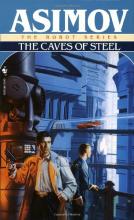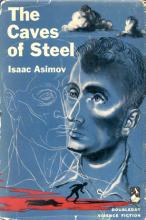inspiration + perspiration = invention :: T. Edison ::
No, I don't have 1000 words for today; in fact, if anyone follows my blog, they'd notice I didn't post anything last week. One thing I've learned trying to keep a weekly blog is how important prewriting is: get reviews and shorts written up ahead of time so I don't have to come up with stuff on the fly. Unfortunately, I got behind. I'll hopefully have more reviews for next week moving into April.
In the meantime, a lot of the blogs I follow (and people who haven't fallen behind) recently discussed book cover design. The rise of digital media has increased a cover's importance. Instead of competing with a shelf full of books in a local store, it now has to stand out amidst potentially hundreds of other ones at online seller lists and on social media. Cover reveals have become big online fodder for famous authors; designers tweet about their process, or even hold contests to choose a design.
Books that hang in their long enough, with enough sales or fans or awards, eventually go through a redesign process when a new edition is released. Sometimes the choices made are controversial (such as when a new Charlie and the Chocolate Factory cover that strayed from the traditional illustrations caused an uproar), but often the entire process is ignored, especially when there are multiple covers spanning decades that people become attached to. A good design will reach people to give them a sense of the story, hitting them on an emotional level that terrifies, excites, or intrigues (or all of the above).
 Take Caves of Steel, a robot detective story by Asimov I reviewed back in January. I read the 1991 paperback edition, graced by a photorealism cover emphasizing the protagonist Elijah Baley as a tough cop in a science fiction world. It looks like a less hardened form of the famous Blade Runner poster, with Baley holding his weapon prominently in red against a cool blue background. The film was nearly a decade old then, and had set the standard on what "science fiction detective" should look like.
Take Caves of Steel, a robot detective story by Asimov I reviewed back in January. I read the 1991 paperback edition, graced by a photorealism cover emphasizing the protagonist Elijah Baley as a tough cop in a science fiction world. It looks like a less hardened form of the famous Blade Runner poster, with Baley holding his weapon prominently in red against a cool blue background. The film was nearly a decade old then, and had set the standard on what "science fiction detective" should look like.
 In contrast, the original 1954 cover has more in common with Agatha Christie than Ridley Scott. It places more emphasis on the puzzling crime rather than the hardened cop, with the silhouetted body against blood red underneath a contemplative head that may be the lead human Baley, or his robot partner. The entire illustration is intentionally surreal and ambiguous, inviting association with other mysteries of the day and the potential for a smooth whodunit.
In contrast, the original 1954 cover has more in common with Agatha Christie than Ridley Scott. It places more emphasis on the puzzling crime rather than the hardened cop, with the silhouetted body against blood red underneath a contemplative head that may be the lead human Baley, or his robot partner. The entire illustration is intentionally surreal and ambiguous, inviting association with other mysteries of the day and the potential for a smooth whodunit.
Most telling of all, nothing about the cover suggests the science fiction setting. While I think the mirrored image of the man suggests to readers in the know the tale of a robot coming into his own humanity, to outside readers this book is sold as a straight crime novel. Science fiction wasn't mainstream yet in the 1950s, with the idea of a Blade Runner-sized hit still years away. This cover's ambiguity is an asset for its time, while contemporary audiences intentionally seeking science fiction would probably pass it by, not recognizing it as a classic of the genre.
I don't think one is better than the other: they have different audiences they're trying to reach, so they use different imagery to communicate the story. But both are recognizable as illustrating the story they represent. I'm a bit attached to the paperback edition, if only because it so clearly envisions the world Asimov penned and because it's the one I experienced as a reader first. However, I appreciate the '54 cover for its period style and mood.
But it's not just age that can spark a redesign: publishers also market books differently in other countries. More on that Thursday. In the mean time, what's your favorite book cover, and do you prefer originals (old design) or newer prints?
Original Caves of Steel cover design by Ruth Ray for Doubleday, printed in 1954. The 1991 Paperback edition from Spectra/Bantam was designed by Stephen Youll.





